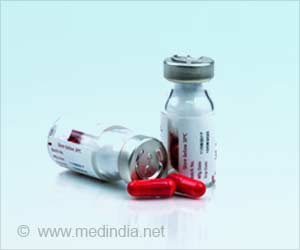Tuberculosis (TB) bacteria have a suicide system which could lead to new treatments for TB. The toxin-antitoxin (TA) system that makes the bacteria suicidal is a potential drug target for developing new therapies.
- Tuberculosis (TB) bacteria, Mycobacterium tuberculosis (Mtb), have a suicide system known as toxin-antitoxin (TA) system
- The TA system makes the bacteria suicidal and could be a potential drug target
- This could lead to the development of novel treatments for TB
The study was led by Dr. Matthias Wilmanns, Ph.D, and Dr. Annabel Parret, Ph.D. Dr. Wilmanns is a Senior Scientist and Group Leader, while Dr. Parret is a Staff Scientist in his Group at the European Molecular Biology Laboratory (EMBL), Hamburg, Germany.
Their collaborators included scientists from Dr. Olivier Neyrolles’ Group at the Institute of Pharmacology and Structural Biology (IPBS), National Center for Scientific Research (CNRS)/University of Toulouse, France, as well as scientists from Dr. Luiz Pedro Carvalho’s Group at The Francis Crick Institute, London, UK.
Read More..
What is the Tuberculosis Bacteria’s Toxin-Antitoxin (TA) System?
The Mtb genome has 80 TA systems, consisting of closely interlinked genes that encode a toxin (toxic protein) and an antitoxin, which is capable of neutralizing the toxin. Under normal conditions, the activity of the toxin is kept in check by the bound antitoxin in the TA complex.However, when the bacteria are under stress such as when nutrients become limited, specific enzymes present in the bacterial cells degrade the antitoxin, thereby removing its inhibitory effect on the toxin. As a result, the activated toxin molecules slow down the growth of the bacteria, so that they can survive in the harsh and stressful conditions.
A specific type of TA system exhibits a more extreme effect when the antitoxin molecules are degraded. In this case, the toxin molecules actually kill the bacterial cells, thereby essentially making the cells commit suicide. Thus, this particular TA system could be a potential drug target for therapeutic purposes. That is why the research team was interested in taking a closer look at the structure of this TA system.
Determination of the Structure of the TA System
The high-resolution structure of the TA system was determined by the lead author, Dr. Diana Mendes Freire, PhD, who was previously at EMBL, but is currently a Project Officer at Ciência Viva in Lisbon, Portugal.Freire solved the structure of the TA system within a matter of just eight months. In this regard, Parret says "Our goal was to see the TA system’s structure, so we could try to understand and even manipulate it. It was as if we were working blindly before.”
The TA system has a large compact structure that is shaped like a double-doughnut. Wilmanns likens it to a diamond. "It looks like a diamond, and it is very stable,” he says. Interestingly, the molecular structure of the toxin resembles the toxins of cholera and diphtheria, which have been responsible for hundreds of thousands of deaths over the past century.
Importance of the Structure of the TA System
Armed with the knowledge of the structure of the TA system, this interdisciplinary group of scientists was able to determine its mode of action. They found that after dissociation from the antitoxin, the toxin becomes activated and starts to degrade crucial cellular metabolite molecules called nicotinamide-adenine dinucleotide (NAD+). This suicidal activity eventually results in the death of the Mtb cells. Why these bacterial cells exhibit such a suicidal behavior has still not been worked out. However, based on current knowledge, the TA system could be exploited as a potential drug target for developing new treatments for TB.Concluding Remarks
The results have been extremely encouraging. “Our collaborators in Toulouse were already able to extend the lifetime of mice infected with TB by activating the toxin in a controlled way,” says Parret. “If we find molecules that can disrupt the TA system - and thus trigger cell death - in TB patients, that would be the perfect drug.”In order to find this “perfect drug” that can bind to and break-up the TA complex, possibly thousands of small molecules will need to be screened. However, it should be noted that it will be extremely difficult to find the ideal molecule as the structure of the TA system is so highly stable that it will be an enormous challenge to find an entry point to break-up the complex. In spite of this, Wilmanns is still very optimistic and says “But if we succeed, this could be a new approach for treating TB and other infectious diseases.”
Reference:
- An NAD+ Phosphorylase Toxin Triggers Mycobacterium tuberculosis Cell Death - (https://doi.org/10.1016/j.molcel.2019.01.028)
Source-Medindia
















